Traveller is a science fiction role-playing game first published in 1977 by Game Designers' Workshop. Marc Miller designed Traveller with help from Frank Chadwick, John Harshman, and Loren Wiseman. Editions were published for GURPS, d20, and other role-playing game systems. From its origin and in the currently published systems, the game relied upon six-sided dice for random elements. Traveller has been featured in a few novels and at least two video games.

Game Designers' Workshop (GDW) was a wargame and role-playing game publisher from 1973 to 1996. Many of their games are now carried by other publishers.
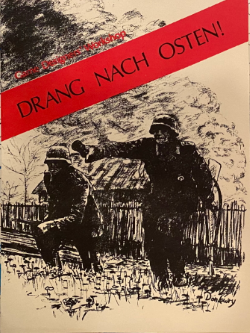
Drang Nach Osten! is a monster board wargame published in 1973 by Game Designers' Workshop (GDW) that simulates Operation Barbarossa, the German invasion of the Soviet Union in 1941. The game was the first of what was envisioned as a series of games with identical wargame rules and map scale that would simulate the entire Second World War in Europe.

Marc William Miller is a wargame and role-playing game designer and author.

Frank Chadwick is an American game designer and New York Times best selling author. He has designed hundreds of games, his most notable being the role-playing games En Garde!, Space: 1889 and Twilight 2000, and the wargame series Europa and The Third World War, as well as creating Traveller with Marc Miller. He has won multiple awards for his work.
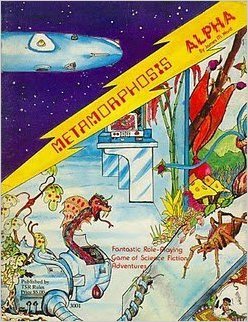
Metamorphosis Alpha is one of the first science fiction role-playing games, published in 1976. It was created by James M. Ward and originally produced by TSR, the publisher of Dungeons & Dragons.
Timothy B. Brown is an American game designer, primarily of role-playing games. He has been a designer at Game Designers' Workshop, an editor at Challenge magazine, and the director of product development at TSR.

Gods, Demi-Gods & Heroes is a supplementary rulebook for the Dungeons & Dragons (D&D) fantasy role-playing game. Its product designation is TSR 2006.
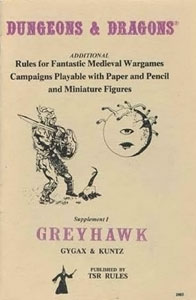
Greyhawk is a supplementary rulebook written by Gary Gygax and Robert J. Kuntz for the original edition of the Dungeons & Dragons (D&D) fantasy role-playing game. It has been called "the first and most important supplement" to the original D&D rules. Although the name of the book was taken from the home campaign supervised by Gygax and Kuntz based on Gygax's imagined Castle Greyhawk and the lands surrounding it, Greyhawk did not give any details of the castle or the campaign world; instead, it explained the rules that Gygax and Kuntz used in their home campaign, and introduced a number of character classes, spells, concepts and monsters used in all subsequent editions of D&D.

Swords & Spells is a supplementary rulebook by Gary Gygax for the original edition of the Dungeons & Dragons fantasy role-playing game. Its product designation is TSR 2007.

Belter, subtitled "Mining the Asteroids, 2076", is a science fiction board game published by Game Designers' Workshop (GDW) in 1979.
La Bataille de la Moscowa is a board wargame published originally by Martial Enterprises in 1975, later republished by Game Designers Workshop in 1977, and by Clash of Arms in 2011.

Megatraveller Referee's Companion is a supplement published by Game Designers' Workshop (GDW) in 1988 for the science fiction role-playing game MegaTraveller.
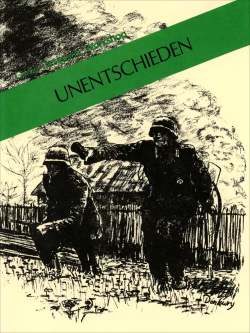
Unentschieden is a board wargame published by Game Designers' Workshop (GDW) in 1973 that simulates combat on the Eastern Front during World War II. The game is a expansion of GDW's popular "monster" wargame Drang Nach Osten!, and was the second game in the Europa series that was planned to eventually cover all operations in the European Theatre.

Citadel:The Battle of Dien Bien Phu is a board wargame published by Game Designers Workshop (GDW) in 1977 that is a simulation of the Battle of Dien Bien Phu that marked the end of the First Indochina War in 1954.

Napoleon at War, subtitled "Four Battles", is a collection of four board wargames published by Simulations Publications Inc. (SPI) in 1975 that simulates various battles fought by Napoleon.

Bar-Lev, subtitled "The Yom-Kippur War of 1973", is a board wargame published by Conflict Games in 1974, only months after the end of the Yom Kippur War. The game simulates battles on the two major fronts of the war: the Golan Heights and the Suez Canal. The game proved very popular, and a second edition was published by Game Designers' Workshop (GDW) in 1977.

Custer's Last Stand, subtitled "The Battle of Little Big Horn, June 25, 1876", is a board wargame published by Battleline in 1976 that simulates the Battle of the Little Big Horn.
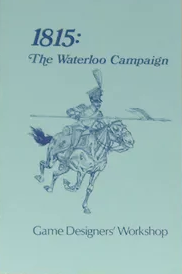
1815: The Waterloo Campaign is a board wargame published by Game Designers' Workshop (GDW) in 1975 that simulates the final three days of Napoleon's last campaign, culminating in the Battle of Waterloo. Reviewers characterized the game as not too complex, playable, fast-moving, and enjoyable. The game was found to be tilted in favor of the French, and GDW released a second edition in 1982 that addressed that issue.

7th Cavalry is a board wargame published by Attack Wargaming Association (AWA) in 1976 that simulates the Battle of Little Big Horn. Published on the centenary of the battle, the game had two other rival games about the same battle introduced at the same games fair, and as a result, none of the games sold well. In addition, critics found this game's rules too simple, and not well written.

















